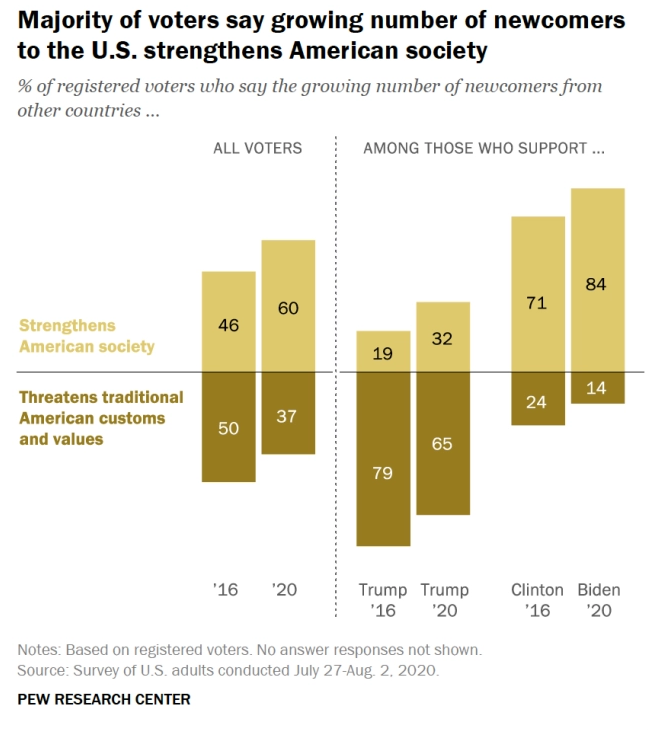In a proposed rule published on September 11, 2020, the Department of Homeland Security (DHS) once again attacks legal immigration, and opens up a new front against lawful permanent residents in the U.S. While the rule’s title, “Collection and Use of Biometrics by U.S. Citizenship and Immigration Services” may seem benign, the impact and the intent are anything but.
Comments opposing the proposed rule, which would be carried out by U.S. Citizenship and Immigration Services (USCIS), Customs and Border Protection (CBP), and Immigration and Customs Enforcement (ICE), are due by midnight on October 13, 2020.
This proposed rule continues the administration’s “death by a thousand cuts” efforts to end legal immigration almost entirely. And consistent with other regulatory reforms, such as the 2019 “public charge rule” change, this proposed rule, while broadly applicable on its face, takes particular aim at immediate family immigration.
At the same time, it represents a sweeping collection of personal identifying data of U.S. citizens and immigrants alike. The proposed rule estimates that 6.07 million people annually would be required to submit biometrics, a 55% increase from the average of 3.9 million currently. Applicants for immigration status have long been required to submit biometrics so that DHS can vet them, but this new rule will require biometrics from anyone who files or is “associated with” an immigration application or petition filed on behalf of another.
The proposed rule’s biometrics requirements also apply to most nonimmigrants, but only if their countries require fingerprinting of U.S. citizens “temporarily residing” (a term which the rule fails to define) there.
Key provisions of the proposed rule include:
- Expanding the types of biometrics USCIS will collect to include not just the current photos, fingerprints, and signatures, but also palm prints, voice prints, iris prints, and in many cases, DNA.
- Requiring the following to submit biometrics in order for their immediate family members to be approved to immigrate, including:
-
- U.S. citizens (native-born or naturalized) petitioning for their spouses, parents, children, siblings, and fiancé(e)s;
- permanent residents (“green card” holders) petitioning for their spouses and unmarried children;
- refugees and asylees petitioning for their spouses and children.
- Expanding those subject to providing biometrics to children of any age (currently those younger than 14 are exempt from routine biometrics submission).
- Requiring biometrics of certain immigrant crime victims and human trafficking victims.
- Requiring biometrics from any U.S. citizen or permanent resident joint financial sponsor of an intending immigrant. Many immediate family members simply cannot immigrate without joint financial sponsors in addition to their petitioning U.S. citizen and permanent resident sponsors. This change especially raises new barriers to immediate family immigration, by discouraging individuals from agreeing to be a joint financial sponsor due to the privacy concerns raised by the biometrics requirement and by the rule’s more cumbersome, intimidating, and expensive (sponsors must pay an $85 biometrics fee) process.
- Authorizing CBP to designate certain foreign workers as subject to the
Temporary Worker Visa Exit Program, requiring them to submit biometrics and exit through specified ports of entry.
- Giving immigration agencies unprecedented authority to require biometrics of any noncitizen, including permanent residents , on a repeated basis “for purposes of continuous vetting, unless and until he or she is granted U.S. citizenship.” This is notwithstanding that the rule states that DHS will store the biometrics digitally and can reuse them.
This last requirement not only casts aspersions that “continuous vetting” of immigrants is needed, when to the contrary, data indicates that immigrants do not present elevated crime or terrorism risks, but it also puts immigrants’ legal status at risk, since the rule says that DHS can revoke or rescind an immigrant’s status if s/he misses a biometrics appointment (which can easily happen when DHS sends a biometrics notice to the wrong address). Put simply, this reflects an administration that doesn’t regard immigrants as the full and equal members of U.S. society that they are, who, like centuries of immigrants before them, have left everything dear to them behind, to come to the U.S. to work and to strive for a better life for themselves and their children.
Immigrants are already choosing to take their talents to other countries due in part to perceived hostility towards immigrants in the U.S. That perception will only grow if immigrants are harassed through repeated calls to appear for biometrics already electronically stored in DHS’s files.
Even before the onset of the pandemic, since FY 2016 the U.S. has experienced steep legal immigration declines, and executive actions following the onset of COVID-19 blocking entry of nearly all new immigrants from April 24, 2020 through December 31, 2020 will result in plummeting numbers this year. The proposed rule, which would apply to those getting permanent residency from within the U.S., would reduce legal immigration even further.
The U.S., and Maine, need immigrants. The proposed rule must be opposed, both for the reduction in immigration it will cause, and for the hostile message that it sends to immigrants that they are not valued and fully part of the “we” that makes up this nation.
MeBIC will be opposing this rule.


